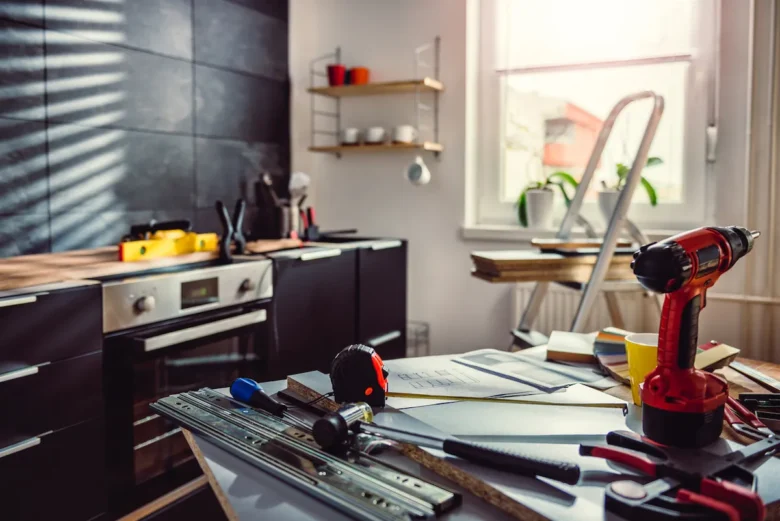Tackling home improvement yourself can feel like a daunting task, especially if you’re new to DIY. However, the good news is, with the right tools, tips, and mindset, you can transform your living space while saving money and adding a personal touch to your home. This guide will equip you with everything you need to get started on your own DIY home improvement journey.
Why DIY Home Improvement?
DIY home improvement isn’t just about saving money; it’s about taking control of your space and making it truly yours. Whether it’s revamping your living room with a fresh coat of paint or building a functional storage solution, DIY projects give you the freedom to customize your home to your preferences. Additionally, they’re a great way to learn new skills and boost your confidence.
Getting Started with DIY
Step 1: Assess Your Skills and Set Realistic Goals
Before you jump into a project, take an honest look at what skills you have and what you’re willing to learn. Start with simple projects and work your way up as you gain experience. For example:
- Beginner level: Painting walls, assembling simple furniture, hanging shelves.
- Intermediate level: Installing laminate flooring, building a garden planter.
- Advanced level: Replacing light fixtures, designing custom cabinetry.
Step 2: Plan Your Budget and Time
DIY can be cost-effective, but careful planning is crucial. Determine how much money and time the project will require, and be realistic about whether you can meet those demands. Pro tip: Always add a 10-20% buffer to your budget for unexpected expenses.
Step 3: Gather the Right Tools
Investing in basic tools is key to any DIY project. Here’s a starter list:
- Measuring tape
- Screwdrivers (flathead and Phillips)
- Hammer
- Utility knife
- Cordless drill
- Level
- Sandpaper
- Paint supplies (roller, brush, painter’s tape)
Depending on the project, you may need additional specialized tools, but these essentials will cover most basic projects.
Ideas for Easy DIY Home Improvement Projects
1. Freshen Up with Paint
A fresh coat of paint can do wonders for any room. Whether you’re changing the color to match your mood or creating an accent wall, painting is one of the most cost-effective and dramatic makeovers you can achieve. Be sure to use painter’s tape for clean edges and invest in a quality roller for even application.
2. Create Custom Shelving
Tired of clutter? Custom shelves are both functional and decorative. Floating shelves, for example, are simple to create with wooden planks and brackets, and they’re perfect for displaying books, plants, or framed pictures.
3. Update Cabinet Hardware
A straightforward way to give your kitchen or bathroom a facelift is by changing out the knobs and handles on cabinets. Select stylish, modern hardware and swap it out in less than an hour to make a big visual impact.
4. Build a Garden Planter
If you have a small yard or balcony, creating a DIY garden planter is an excellent project. Use wooden pallets or repurposed crates for an eco-friendly option, and customize the size to fit your space.
5. Enhance Lighting Fixtures
Upgrading light fixtures can completely transform a room’s ambiance. You can replace outdated fixtures with modern designs or even install dimmer switches for adjustable lighting. Always turn off the power at the breaker before working with electrical components.
Safety Tips for DIY Projects
Safety should always come first when undertaking any DIY home improvement project. Here are some important precautions to keep in mind:
- Wear safety goggles and gloves as needed.
- Use ladders properly and avoid overreaching.
- Work in well-ventilated areas when using paints or adhesives.
- Follow manufacturer instructions for tools and materials.
- When in doubt, consult a professional for guidance.
Common Mistakes to Avoid
- Skipping Prep Work: Proper preparation, like cleaning surfaces or taping edges, leads to a polished final result.
- Rushing Through the Project: Take your time to ensure quality and accurate measurements.
- Ignoring the Instructions: Read and follow instructions for tools, materials, or kits to avoid costly mistakes.
- Using the Wrong Tools: Using inappropriate or subpar tools can compromise the quality of your work.
Why DIY is More Than Just Home Improvement
Beyond making your home look better, DIY projects can foster creativity, problem-solving skills, and even a sense of community when you involve family or friends. Plus, there’s no greater satisfaction than completing a project with your own two hands and seeing the transformation in real-time.
Building Confidence Through DIY
Success in DIY home improvement comes down to preparation, patience, and practice. Start small, learn as you go, and don’t be afraid to ask for advice or assistance when needed. Soon enough, you’ll find yourself eager and excited to tackle bigger projects.
No matter where you’re starting from, there’s no limit to what you can achieve with a bit of creativity and determination.



